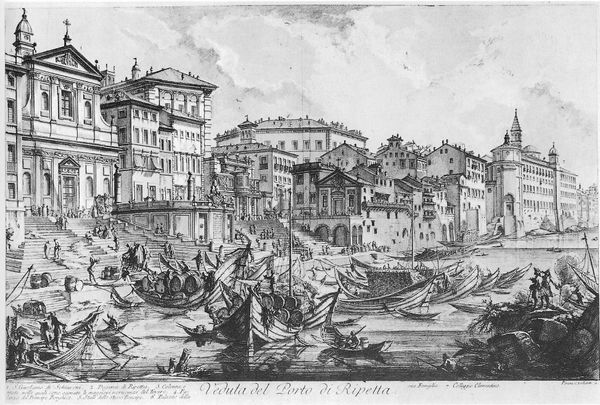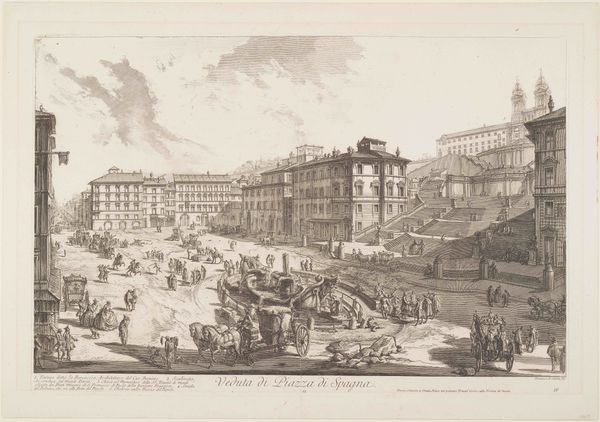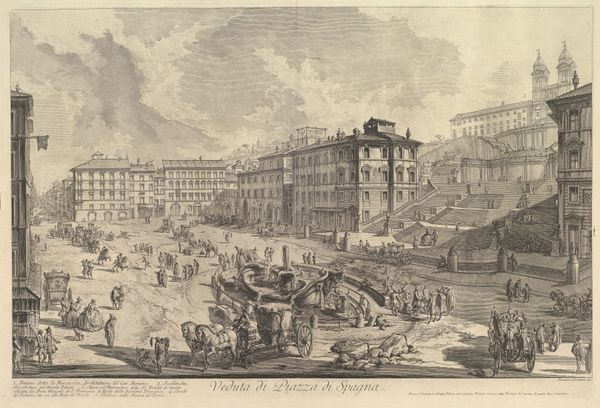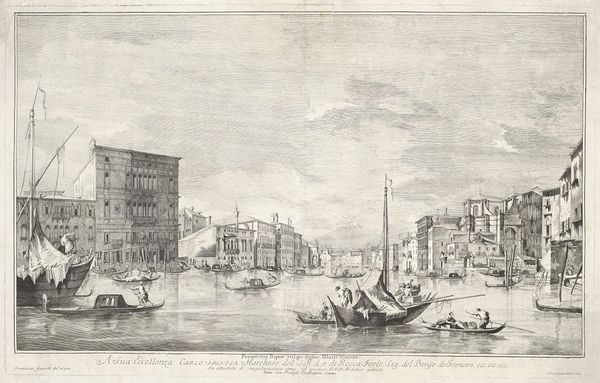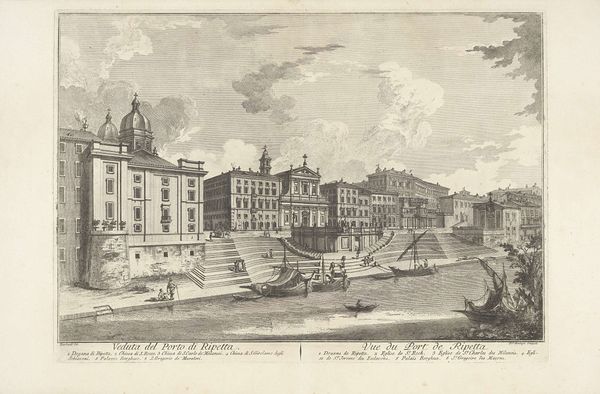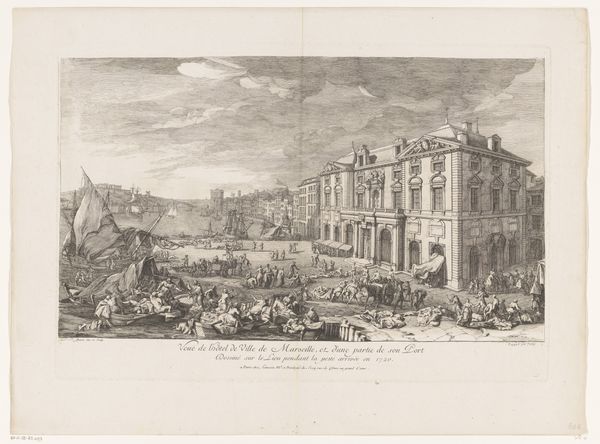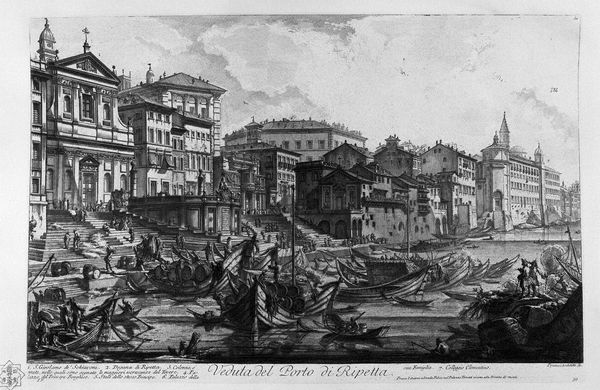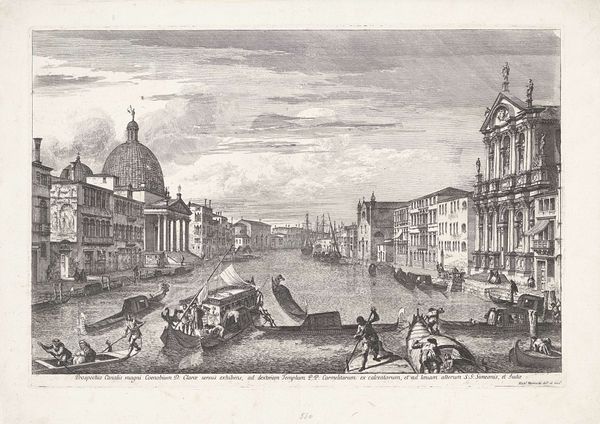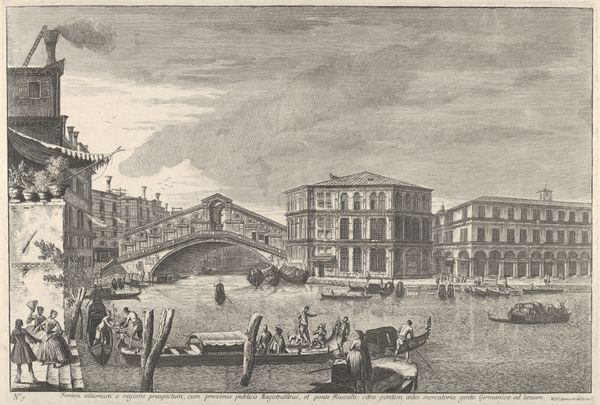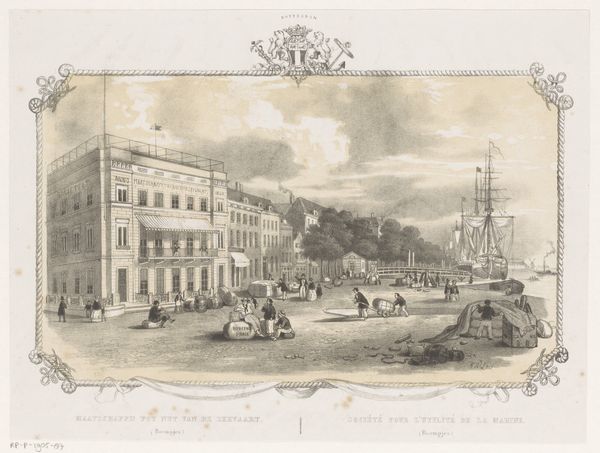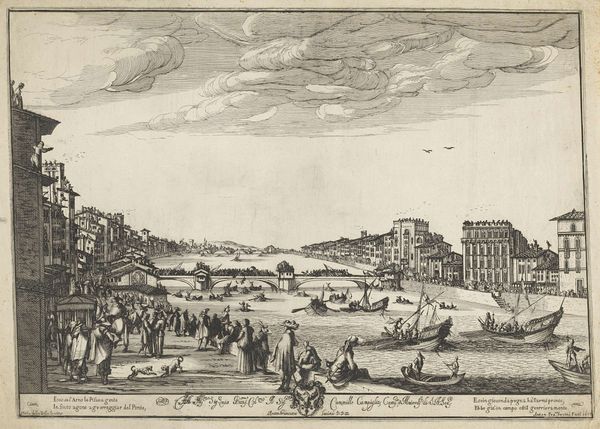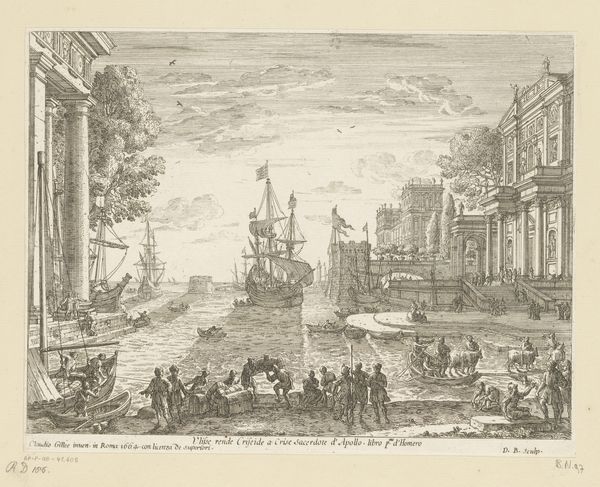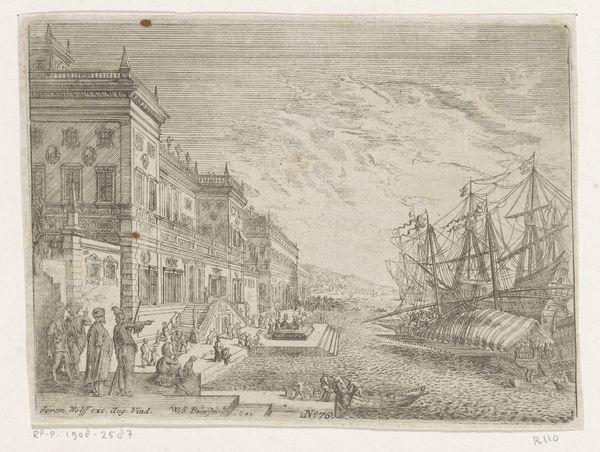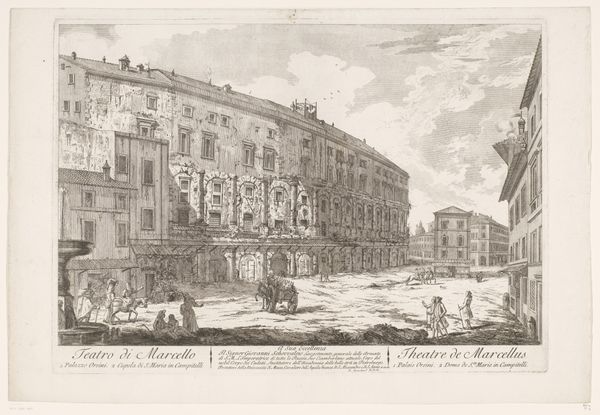
The smaller harbor, called the Porto di Ripetta (Veduta del Porto di Ripetta) 1748 - 1758
0:00
0:00
drawing, print, etching
#
drawing
#
baroque
# print
#
etching
#
landscape
#
cityscape
#
italian-renaissance
#
building
Copyright: Public Domain
Editor: This is Giovanni Battista Piranesi’s etching, "The smaller harbor, called the Porto di Ripetta," made sometime between 1748 and 1758. I'm immediately struck by the intricate detail and the sense of bustling activity; so much texture and life is rendered simply through line. How do you interpret this work from a formalist perspective? Curator: Note how Piranesi utilizes the interplay of light and shadow to delineate form and structure. The rigorous organization of space is quite intentional. See how orthogonal lines converge to establish depth and recession, while the varied textures of the buildings are carefully distinguished using hatching and cross-hatching. Does this deliberate structural complexity communicate a specific meaning to you? Editor: It emphasizes the grandeur of the architecture, I think. The strict lines make the scene seem almost hyper-real, even though it depicts a very populated, active harbor. I hadn't noticed the convergence of the orthogonal lines until you pointed it out, but now it seems so obvious. Curator: Precisely. Piranesi is not merely documenting; he is constructing a visual argument about order and perspective. The linear precision establishes the perspectival accuracy which communicates an idealized vision of architectural achievement and imposing built structures. He wants you to note the formal harmony he perceives. Editor: So, it's less about capturing the reality of the harbor, and more about the artist conveying a feeling of organized complexity? Curator: Consider it an articulation of power and permanence, rendered through the controlled vocabulary of line and form. Are you persuaded by his architectural argument? Editor: Absolutely. Focusing on the structural elements really helped me to see past the chaotic surface and appreciate the underlying organization. Curator: And in turn, close visual attention to structure and form brings the etching's essence into sharper focus.
Comments
No comments
Be the first to comment and join the conversation on the ultimate creative platform.
